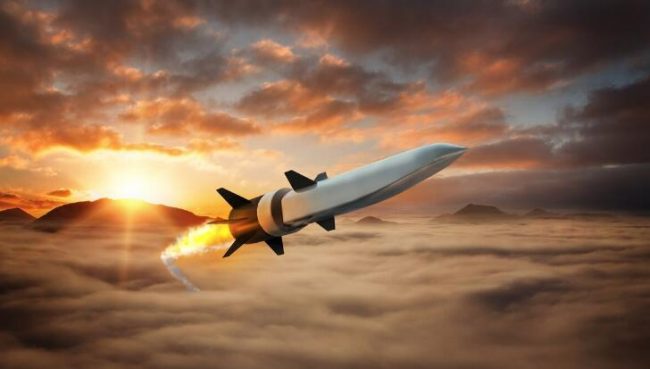Northrop to Build 3D-Printed Scramjet Engine for Raytheon Hypersonic Weapon
Raytheon has partnered with Northrop Grumman on its air-breathing hypersonic weapon, which will be powered by a Northrop-made scramjet made entirely of 3D-printed parts, the company announced Tuesday.
Raytheon and Northrop’s weapon is one of the competitors in the U.S. Defense Advanced Research Projects Agency’s HAWC project, short for Hypersonic Air-Breathing Weapon Concept.
 Raytheon and Northrop Grumman are teaming to accelerate air-breathing hypersonic vehicle development. The companies will partner on DARPA’s Hypersonic Air-Breathing Weapon Concept. (Raytheon)
Raytheon and Northrop Grumman are teaming to accelerate air-breathing hypersonic vehicle development. The companies will partner on DARPA’s Hypersonic Air-Breathing Weapon Concept. (Raytheon)
The companies’ offering — which comprises Northrop’s scramjet engine and Raytheon’s air vehicle — is ready to make its first flight, said Tom Bussing, vice president of Raytheon’s advanced missile system segment.
“We have a flight test planned for the near future where we will begin flying this particular class of weapon system,” he said during a briefing at Paris Air Show. While the exact schedule is classified, Bussing noted that the companies have already conducted “significant” ground tests
“The combustor, everything that we do now is done by additive manufacturing, so its driving affordability into the hypersonic boost missile’s scramjet engine. We are also looking at ways to reduce the weight so we can have more fuel, more payload,” he said.
The entirety of Northrop’s scramjet is 3D printed using advanced materials, said John Wilcox, the company’s vice president of advanced programs and technology.
“There gets to be points where you have to weld additive manufactured parts, but right now even the full combustor [is printed],” he said. “We think we’re the first to ever 3D print a full combuster for an air-breathing scramjet engine. That’s what’s going to drive the affordability for air-breathing scramjet missiles.”
According to Raytheon, scramjet engines use high vehicle speeds to then compress air moving into its inlets before combusting it. The process allows a vehicle to maintain hypersonic speeds — more than five times the speed of sound — over longer periods of time.
The Raytheon-Northrop team is competing against Lockheed Martin for the final HAWC contact.
Source:Defense News




Recent Comments